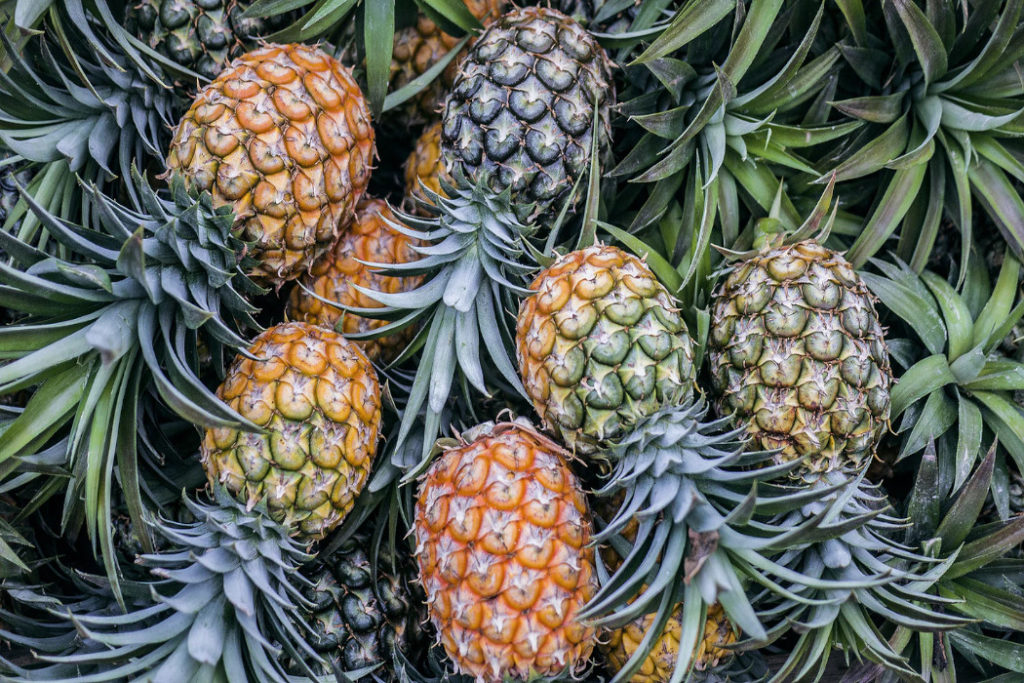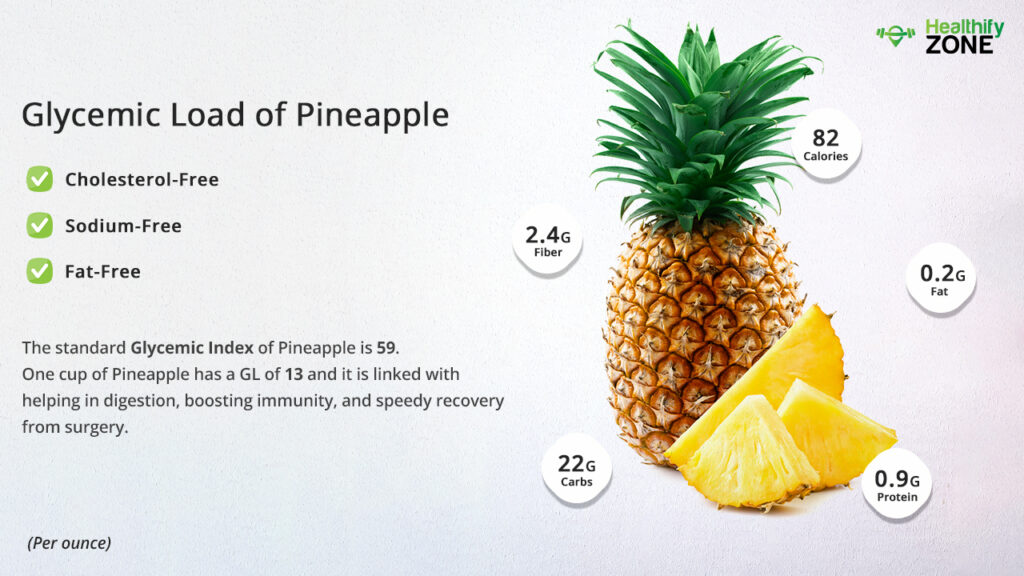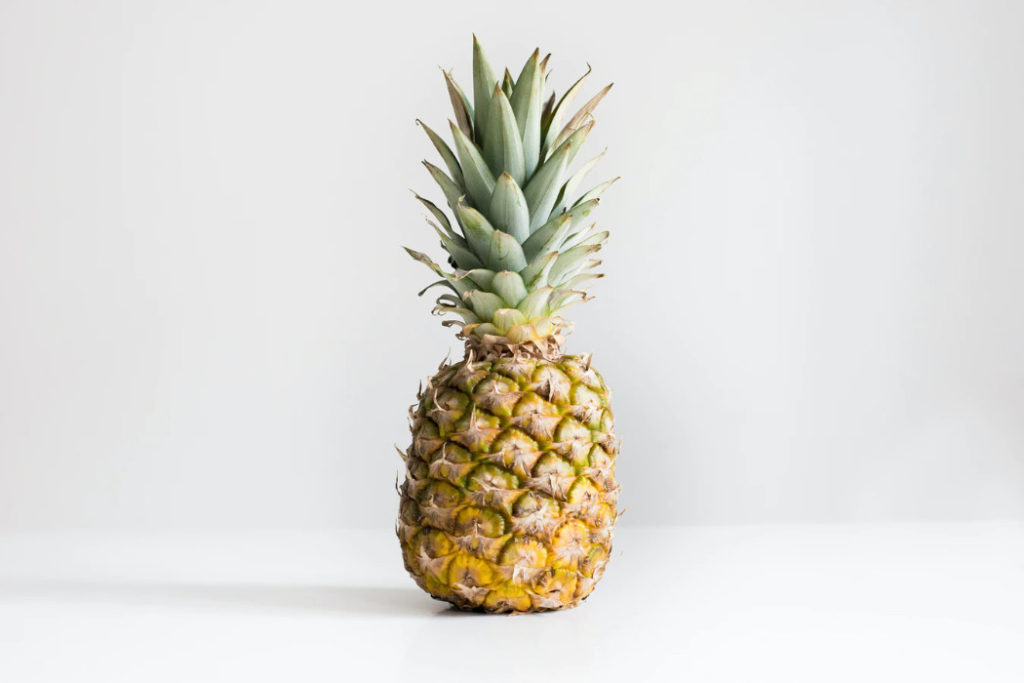The scale of carb content in a portion of food with the pace with which it can increase your blood glucose levels is called Glycemic Load. A simple way of making healthy diet choices is by simply following the Glycemic Index, which helps compare and find alternative sources of nutrients according to your blood glucose levels. Glucose has a relatively higher blood glucose response in comparison to fructose.
Pineapple is a very healthy tropical fruit and is very delicious. It is a very popular fruit that is packed with nutrients, antioxidants, and helpful compounds, like enzymes that can help fight inflammation and diseases. The compounds that pineapple has have been linked with several health benefits, like helping in digestion, boosting immunity, and speedy recovery from surgery.

Pineapples are loaded with nutrients and are extremely delicious. These healthy nutrients are:
- Fiber
- Vitamin C
- Manganese
- Vitamin B6
- Copper
- Thiamine
- Folate
- Potassium
- Magnesium
- Niacin
- Pantothenic Acid
- Riboflavin
- Iron
How to Calculate Glycemic Load of Pineapple?
The standard Glycemic index of Pineapple is 59. The high glycemic index of the fruit helps in reducing the risks related to cardiovascular diseases. If we want to talk about diet, the key to prevent diabetes or any chronic illness is to distribute the carbohydrate consumption content throughout the day and manage the sugar levels in the body correctly—however, the glycemic load for one cup of chopped watermelon= 5.2 approximately which makes it an extremely favorable food.

The Formula/Procedure For Calculation of Glycemic Index of the Watermelon :
GL = GI * carbs / 100
where
- GL – glycemic load;
- GI – glycemic index;
- and carbs – the amount of carbohydrates in the portion.
| SL.NO | WATERMELON BY WEIGHT IN (g) | GLYCEMIC LOAD |
| 1. | 100 g of Pineapple | 7.7 (low) |
| 2. | 250 g of Pineapple | 19.25 (medium-high) |
| 3. | One thick slide of Pineapple | 6.5 (low) |
| 4. | 1 Kg of Pineapple | 77 (very high) |
| 5. | One Whole Pineapple (2.5 to 3 Kg) | 70 (very high) |
| 6. | 1 Cup of Pineapple (165 g) | 13 (medium) |
Is Pineapple Safe to Consume If You Have Diabetes?
If you have diabetes, you can eat pineapple. However, given that pineapple contains carbohydrates and natural sugar, it is necessary to have it in moderation. 100 g of pineapple has a low glycemic load of 7.7, so this would not instantly spike your blood sugar levels as much. So, you can have 100 g of pineapple every serving.
Can I Eat Pineapple During a Fat-Loss Diet?
You can eat pineapple during a strict fat-loss diet. If you are looking for good results, you should avoid having more than 150 g of sliced watermelon per serving.

- A 100g serving of water melon has a GL of 7.7 which is in the permissible levels.
- One whole pineapple is something which shoud be taken rarely if you are on a fat-loss diet.
- Pineapple as a salad ingredient is premissible in a fat-loss diet.
Can I Eat Pineapple During a Low-Carbohydrate Diet?
You can eat pineapple when you are on a low-carbohydrate diet. However, you must be careful about the portion size that you are consuming. You must avoid having more than 100 g at once.
Is Pineapple High in Sugar?
100 g of pineapple has 13 g of carbs and 10of sugar. Although it is sugary, it would not cause a spike in your blood sugar levels because of its low GL. This is one of the best fruits to consume regularly.